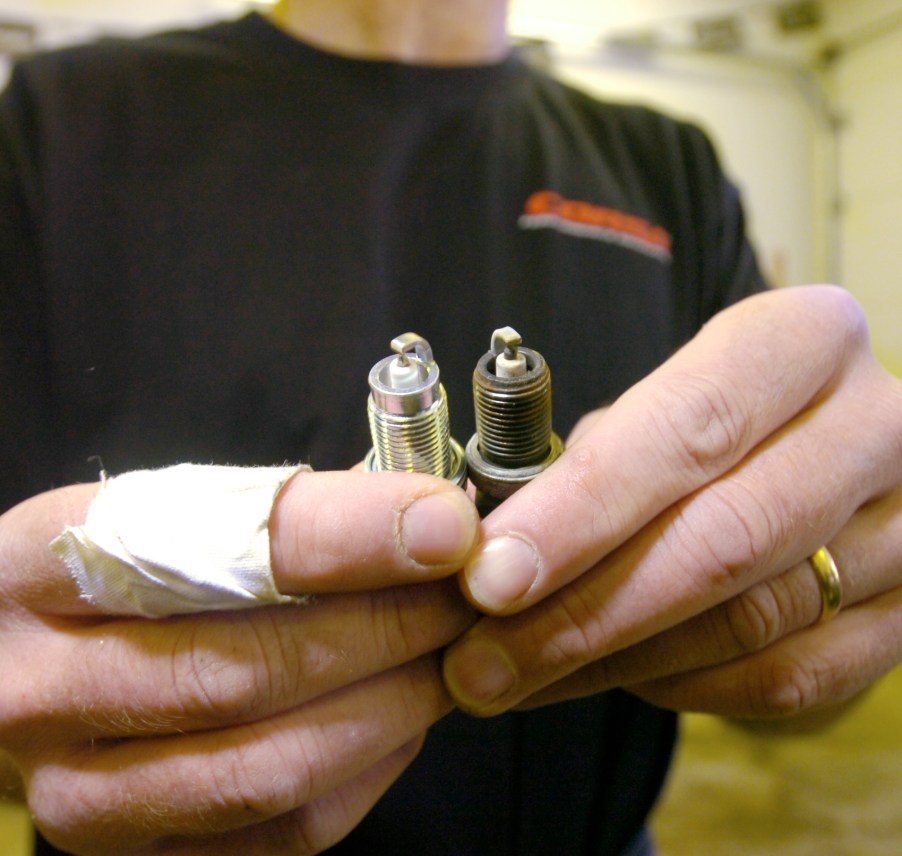
I Accidentally Killed My First Car by Changing the Spark Plugs
While some maintenance tasks are best left to the professionals, some are simple enough to do at home. Theoretically, changing your spark plugs is such a DIY-able maintenance item. But sometimes, even straightforward jobs can lead to significant problems. That’s what happened when I tried to change the spark plugs in my 2002 Chevrolet Malibu.
Changing spark plugs is a regular part of car maintenance

Although their maintenance schedules are longer than, say, your oil filter, changing the spark plugs in your car is a necessity. Along with the attached ignition coils, spark plugs have a finite lifespan. So, even if nothing goes wrong, they need to be replaced every so often to keep your engine healthy.
Spark plugs work by sending an electrical current across an electrode gap. When triggered by the ignition system, the ignition coil sends power to the electrode within the spark plug. That arcs from the electrode’s tip to the metal hook found on the outside of the plug, making a spark. And it’s this spark that ignites the air-fuel mixture inside the cylinder, thus making power.
Modern iridium and platinum spark plugs only need changing every 60,000 miles or so, depending on the car, Haynes reports. However, if too much combustion residue builds up, or the electrode gap changes too much, the plug can fail, The Drive explains. At that point, you’ll likely experience performance loss, a rough idle, or an engine that refuses to start entirely. And if there aren’t any additional ignition system issues, that means you need to replace your spark plugs.
Regardless of what car you drive, changing your spark plugs is a fairly universal procedure, The Drive notes. It’s possible to do it yourself in your driveway or garage with nothing more than a few hand tools. But as I discovered, it’s a procedure that requires patience, attention, and precision.
What can go wrong when changing spark plugs?

My first car was a 2002 Chevrolet Malibu that had close to 200,000 miles on the clock when I got it. And one day while I was driving to work, it started vibrating roughly, almost like half of its cylinders weren’t firing.
The issue turned out to be clogged fuel injectors, rather than spark plug failure. But during the cleaning process, the mechanic mentioned that my spark plugs and wires needed changing. I decided to look up how to do it myself and save some cash. So, after buying the replacement wires and plugs, and borrowing a torque wrench, I got to it.
Broadly speaking, changing spark plugs is relatively simple. After disconnecting your battery, figure out which wire goes to which plug and where it attaches to the distributor. Then, going one plug and one wire at a time, remove the old parts.
Using a gap tool, check the new plug’s gap and adjust it as needed. Then, thread the plug in by hand, making sure it isn’t cross-threaded or seated improperly. Once it’s finger-tight, torque it down to the required spec using the torque wrench and attach the new wire. And repeat until all the plugs and wires have been replaced.
It’s that part about cross-threading that I wish I’d paid attention to when changing my Malibu’s spark plugs.
I didn’t change the plugs properly and it killed my car

The 3.1-liter ‘LG8’ V6 in the 2002 Chevrolet Malibu is positioned such that the ‘rear’ three cylinders are right by the firewall. I could easily access and see the ‘front’ three plugs. However, I had to screw in the rear plugs completely blind. And although I torqued each plug down to the specified amount, I inadvertently cross-threaded one of the rear ones.
Initially, this didn’t cause any problems. But nearly six months to the day later, that improperly-seated plug wormed its way loose and popped out. That caused an engine misfire while I was driving down the highway. And after limping to a shop, I learned what my maintenance had done.
Because of the LG8’s construction, the part where the spark plugs screw into is softer than the plugs themselves. So, not only did I cross-thread one socket, when the plug popped out, it completely stripped the socket’s threads. That meant the mechanic would have to re-thread the socket before replacing the spark plug. And that meant disassembling the top half of the Malibu’s engine as well as using a specialty tool that wasn’t on hand.
As a result, the estimated repair bill for my 2002 Chevrolet Malibu wound up being five times what the car was worth. And that was after the shop owner tried to find a replacement part to avoid re-threading the socket. So, rather than fixing the Malibu, I sold it to a scrapyard.
Does this mean you shouldn’t change your spark plugs yourself?
Although this was an expensive and sobering wrenching lesson, that hasn’t stopped me from changing spark plugs. Several years after the Malibu fiasco, I successfully replaced the plugs and wires on my 1999 Mazda Miata. And although it doesn’t need them yet, I’m confident I could do the same on my Triumph Street Triple R.
The point here is that changing your spark plugs requires careful due diligence. If you aren’t confident in your wrenching skills, you don’t have to DIY it. But if you work slowly and methodically, it can be done at home. I made the mistake so you don’t have to.
Follow more updates from MotorBiscuit on our Facebook page.


